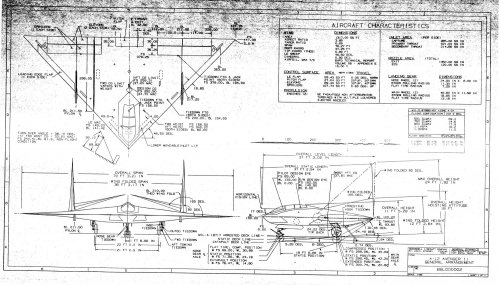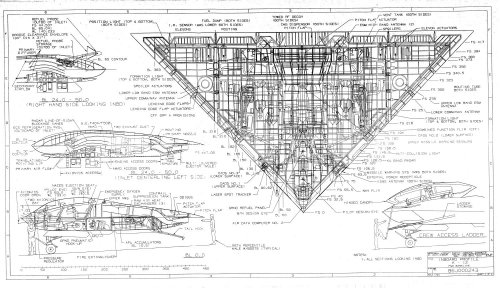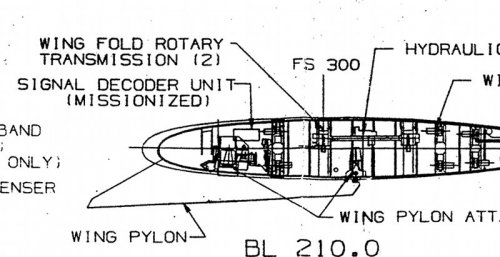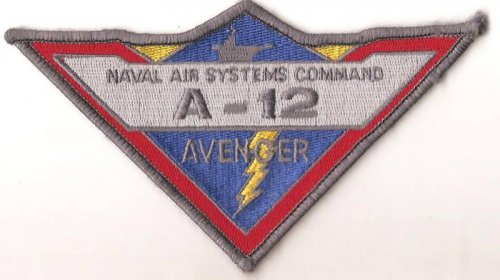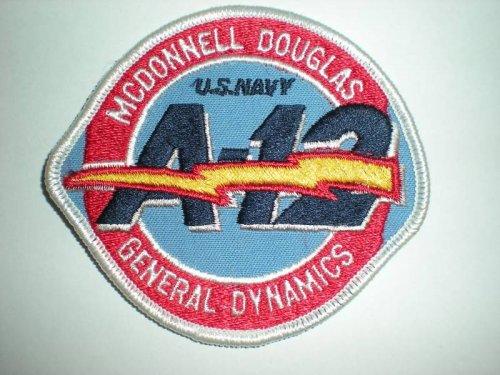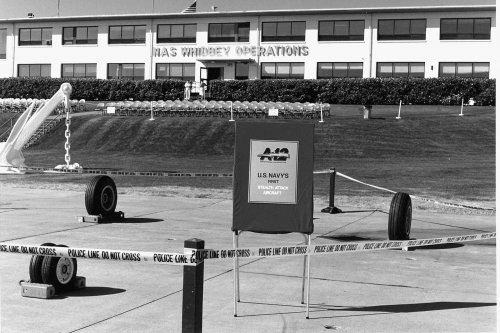I've been meaning to do something meaningful with these - and several more - drawings for years, but it just keeps slipping. An APR article has been planned, but I just haven't gotten to it. So... here. Hopefully I will get back to it.
You are using an out of date browser. It may not display this or other websites correctly.
You should upgrade or use an alternative browser.
You should upgrade or use an alternative browser.
US NAVY ATA (Advanced Tactical Aircraft) program: A-12 Avenger II & its rivals
- Thread starter overscan (PaulMM)
- Start date
archipeppe
ACCESS: Top Secret
- Joined
- 18 October 2007
- Messages
- 2,431
- Reaction score
- 3,149
Outstanding.....as usual.
Outstanding - hopefully you do get back to that APR article. It would be great.
Regards,
Greg
Regards,
Greg
flateric said:but I bet that ones from Jay Miller's archive are other set
The Miller drawings that I saw and photographed were electrical wiring diagrams, with structural arrangements being merely a side effect. These drawings are dedicated structural drawings, and are far better than the Miller drawings for the simple fact that these are high-rez scans rather than crappy photographs.
Last edited by a moderator:
- Joined
- 2 August 2006
- Messages
- 3,255
- Reaction score
- 1,527
Orionblamblam said:flateric said:but I bet that ones from Jay Miller's archive are other set
The Miller drawings that I saw and photographed were electrical wiring diagrams, with structural arrangements being merely a side effect. These drawings are dedicated structural drawings, and are far better than the Miller drawings for the simpl fact that these are high-rez scans rather than crappy photographs.
If you ever get around to it, I would like to see some of the Jay Miller photo's, simply for 3D modeling as they had the various mold line/cross section contours. I've tried 3D modeling this, but it's a difficult shape to capture accurately as there is a lot of subtle complex curves that change across the span. However, that isn't a complaint, just a wish, thanks for what you've posted.
I'm still trying to digest the info on that structural drawing, especially the exhaust louvers. I'm guessing they used those as an "internal nozzle" so they could control the exhaust area without affecting the outer mold lines for LO. I was also surprised by the towed decoys and the length of the inlet vanes down the duct. I think I'm suffering information overload right now. ;D
Sundog said:If you ever get around to it, I would like to see some of the Jay Miller photo's, simply for 3D modeling as they had the various mold line/cross section contours.
The scans are better. More complete, more sections (lat and long), higher rez and most importantly *flat.* The CAD drawings I had created based on the photos had errors introduced by lens aberations, being off-axis, etc.
I'm still trying to digest the info on that structural drawing, especially the exhaust louvers. I'm guessing they used those as an "internal nozzle" so they could control the exhaust area without affecting the outer mold lines for LO.
Maybe this'll help...
Attachments
- Joined
- 2 August 2006
- Messages
- 3,255
- Reaction score
- 1,527
That definitely helps, thanks. I remember the nozzle design always being one of the most guarded secrets of the design so I've always been trying to figure out why. These drawings are very illuminating in that regard.
Scott, between this and the NATF one, you could release the definitive Naval Stealth platform APR edition.
Regards,
Greg
Regards,
Greg
- Joined
- 27 December 2005
- Messages
- 17,749
- Reaction score
- 26,394
Not forgetting the Quiet Stealth design too 
- Joined
- 3 January 2006
- Messages
- 1,223
- Reaction score
- 940
Utterly stunning.
Now the last question I have about the A-12:
What was the bypass ratio of the GE F412? Mass flow?
I know it sounds like minutiae, but this drawing has truly answered just about every other question I ever had.
Now the last question I have about the A-12:
What was the bypass ratio of the GE F412? Mass flow?
I know it sounds like minutiae, but this drawing has truly answered just about every other question I ever had.
overscan said:Not forgetting the Quiet Stealth design too
Not forgetting. I'm just coming from transferring data & images for various backup locations to three folders under my "APR" heading... "F-23 derivatives," "Navy Stealth" and "Early Stealth." The latter has the most designs, many of which I'm pretty sure have not seen the light of day before, some of which are in fact somewhat confusing to me as well.
In deference to the tender sensibilities of some with no patience whatsoever, I'll say no more about them.
- Joined
- 27 December 2005
- Messages
- 17,749
- Reaction score
- 26,394
There are more A-12 drawings in this series. But that could wait for the article 
- Joined
- 6 August 2007
- Messages
- 3,892
- Reaction score
- 5,955
Sundog said:I'm still trying to digest the info on that structural drawing, especially the exhaust louvers. I'm guessing they used those as an "internal nozzle" so they could control the exhaust area without affecting the outer mold lines for LO. I was also surprised by the towed decoys and the length of the inlet vanes down the duct. I think I'm suffering information overload right now. ;D
The inlets and the access panels were two things that contributed to its RCS problems. The vanes were an attempt to block line of sight to the engine faces, but apparently did not help as much as hoped.
- Joined
- 2 August 2006
- Messages
- 3,255
- Reaction score
- 1,527
quellish said:The inlets and the access panels were two things that contributed to its RCS problems. The vanes were an attempt to block line of sight to the engine faces, but apparently did not help as much as hoped.
Yeah, I understood what the vanes were for and remember seeing them in the pics of the full scale mock-up, I was just surprised by their length and can't believe they weren't detrimental to inlet performance. Of course, the more I learn about the GD A-12, as much as I love the design, I can't help thinking how much more "better/realistic" the Northrop design was, of course, partly owing to their B-2 experience.
Regarding the early stealth comments, that should definitely make an interesting APR article, since it's interesting just how far back some of this technology goes as I've been learning since reading more and more on RPV's from the 50's, 60's and 70's. I have feeling one of the planes you have info on is Northrop's submission for Have Blue. I'm not fishing, just saying.
Maybe you should just write a book? I mean seriously. Stealth Design, from 1960 to 1980. I only bring that up because a friend and I were saying someone needs to write a book like that from 1980 to 2010, especially with all of the ATB, ATF/NATF, JAST, AX, AF/X, and JSF info, etc. You probably have enough info to write both volumes.
\Sundog said:Maybe you should just write a book? I mean seriously. Stealth Design, from 1960 to 1980.
I've a sufficiency of such projects jsut now... and not enough info to make a good book-length work on that topic.
Evil Flower
ACCESS: Secret
- Joined
- 12 October 2006
- Messages
- 223
- Reaction score
- 63
Does anyone know which cockpit config is the 'production' one? The one in the simulator is significantly less cluttered compared to the diagram. Also it looks as if it uses the F-15E UFC?
Colonial-Marine
UAVs are now friend, drones are the real enemy.
- Joined
- 5 October 2009
- Messages
- 1,468
- Reaction score
- 1,323
I have never been able to get a good grasp of how far along the A-12 program was when it was canceled. Were they even close to a flying prototype? Were components like the engines and avionics making good progress? I understand the program was canceled because it was extremely over-budget, but what was the cause of such cost-overruns? Was too much expected from MDD and GD?
Personally I think even today the US Navy could use something like the A-12 to be a subsonic bomb-truck.
Personally I think even today the US Navy could use something like the A-12 to be a subsonic bomb-truck.
- Joined
- 1 April 2006
- Messages
- 11,378
- Reaction score
- 10,224
when it was published (ref)?Stargazer2006 said:There is a photo published in AW&ST that shows four prototypes being constructed
- Joined
- 2 August 2006
- Messages
- 3,255
- Reaction score
- 1,527
Colonial-Marine said:I have never been able to get a good grasp of how far along the A-12 program was when it was canceled. Were they even close to a flying prototype? Were components like the engines and avionics making good progress? I understand the program was canceled because it was extremely over-budget, but what was the cause of such cost-overruns? Was too much expected from MDD and GD?
Personally I think even today the US Navy could use something like the A-12 to be a subsonic bomb-truck.
Basically, the Navy tried to get a stealth attack plane on the cheap. Northrop told them it couldn't be built for what they were asking, which is why Northrop dropped out of it. Plus, there were many problems, one of which was the heating from the nozzles on the aft decking, IIRC, after engine shut down. I can't remember if that is in the $5 billion dollar mis-understanding or the Ben Rich book, but Ben Rich/Lockheed was asked by GD to analyze the area and they told them it would be a problem, but GD didn't listen. Plus, due to compartmentalization, GD had to develop their own stealth tech., basically re-inventing most of what Northrop had already done on the B-2. The problem with the A-12 was it simply became unaffordable for the Navy, as Northrop had warned them when they started. It wasn't that the A-12 wouldn't have worked, it was just that there was no way in hell the Navy was going to get it at the price they wanted, and the costs just kept going up. I don't know how bad the weight problem was, but I believe it was quite severe. How much they could have reduced it in a production version I simply don't have an answer for; But I'm willing to bet Northrop has a good idea.
- Joined
- 25 June 2009
- Messages
- 14,748
- Reaction score
- 6,115
flateric said:when it was published (ref)?Stargazer2006 said:There is a photo published in AW&ST that shows four prototypes being constructed
I cut it out from the mag, and I was still a subscriber at the time, so make it circa 1993. I'd have to find the clipping to have the date, since I always stamped the date on the articles I kept. When I find it I'll update this thread (unless someone else gets it first, of course).
- Joined
- 6 August 2007
- Messages
- 3,892
- Reaction score
- 5,955
Stargazer2006 said:I cut it out from the mag, and I was still a subscriber at the time, so make it circa 1993. I'd have to find the clipping to have the date, since I always stamped the date on the articles I kept. When I find it I'll update this thread (unless someone else gets it first, of course).
I'm pretty sure I remember the photo you are talking about, I think it was published around the same time as the photos of the sled test canopy. Sadly I don't have easy access to old AWST issues
However, this should be relevant to our interests:
I actually some new information on SNEAKY PETE and am working on some more. Hopefully by the end of summer we'll have a much more complete picture of how that design contributed to the state of VLO in the 80s.
- Joined
- 18 March 2008
- Messages
- 3,529
- Reaction score
- 978
Stargazer2006 said:There is a photo published in AW&ST that shows four prototypes being constructed, with one more advanced than the others. I'd say "half complete" maybe, if this means anything...
From memorary the advanced aircraft was actually the mock up which was itself over budget, behind schedule, overweight and never finished!
Colonial-Marine
UAVs are now friend, drones are the real enemy.
- Joined
- 5 October 2009
- Messages
- 1,468
- Reaction score
- 1,323
The mock-up was overweight? Did GD really underestimate it by that much?
I suppose it wouldn't be too troubling to make a color 5 view of this; though I hadn't intended to touch 80's-90's stuff until the third installment of my book which I have yet to finish (though am rapidly tearing through).
I have some reference to do a cutaway that some gentleman sent a few years ago. That said...I'm not sure I have it in me to tackle a 40-50 hour job like that right now as I would have to do it on pencil and paper (it's cleaner in Photoshop but slower).
Hmmmn...
I"ll think about it. It is a triangle I guess. Pluto wasn't so bad...it was just a tube.
I have some reference to do a cutaway that some gentleman sent a few years ago. That said...I'm not sure I have it in me to tackle a 40-50 hour job like that right now as I would have to do it on pencil and paper (it's cleaner in Photoshop but slower).
Hmmmn...
I"ll think about it. It is a triangle I guess. Pluto wasn't so bad...it was just a tube.
I found the mock-up 
32.786554,-97.44761 is the location.
It is called NAS JRB "Carswell" in Ft Worth, texas (Naval Air Station Joint Reserve Base Fort Worth)
I don't know if anyone can get into the base to take pictures... I think it is in pretty bad shape...
Cheers,
Rob
32.786554,-97.44761 is the location.
It is called NAS JRB "Carswell" in Ft Worth, texas (Naval Air Station Joint Reserve Base Fort Worth)
I don't know if anyone can get into the base to take pictures... I think it is in pretty bad shape...
Cheers,
Rob
It should be said that, as envisioned, the A-12 would be a dreadfully poor bomb truck. Remember, the intended warload was always something like a F-117 with a pair of AMRAAM. I doubt that (imaginary, as far as I know) external pylons would be very successful given the serious CG margin issues with a tailless design.Colonial-Marine said:Personally I think even today the US Navy could use something like the A-12 to be a subsonic bomb-truck.
- Joined
- 18 March 2008
- Messages
- 3,529
- Reaction score
- 978
Howedar said:It should be said that, as envisioned, the A-12 would be a dreadfully poor bomb truck. Remember, the intended warload was always something like a F-117 with a pair of AMRAAM. I doubt that (imaginary, as far as I know) external pylons would be very successful given the serious CG margin issues with a tailless design.
Uninformed Intuition: 0, Facts: 1
The A-12A and the ATA specification had an extensive bomb truck capability. Each of the two main bomb bays could carry eight Mk 82 500 lb bomber or five Mk 83 1,000 lb bombs or two Mk 84 2,000 lb bombs. That’s a dumb bomb capability of 8,000-10,000 lbs all carried without any drag penalty. The Close Air Support (CAS) mission in the A-12A detail specification was for a mission range of 560 NM with 16 Mk 82 Snakeye 500 lb bombs (9,008 lbs) plus two air to air missiles (1,000 lbs).
- Joined
- 27 December 2005
- Messages
- 17,749
- Reaction score
- 26,394
General Dynamics/McDonnell Douglas ATA (A-12A Avenger II)
Dimensions external
Wing span: 21.42 m (70 ft 3.25 in)
Width, wings folded: 11.05 m (36 ft 3.25 in)
Length overall: 11.35 m (37 ft 3 in)
Height overall: 3.44 m (11 ft 3.75 in)
Height wings folded: 3.82 m (12 ft 6.25 in)
Wheel track (outer rims): 6.71 m (22 ft 0 in)
Wheelbase: 5.85 m (19 ft 2.25 in)
Weights and Loadings
Internal weapon load (24 Mk 82 bombs and four AIM-120 AMRAAM) approx 6,123 kg (13,500 lb)
Design max Take-Off weight: 36,287 kg (80,000 lb)
Text source: Lambert, Mark ed. Jane's All the World's Aircraft 1992-1993 Jane's Information Group Ltd. 1992 p. 282.
Dimensions external
Wing span: 21.42 m (70 ft 3.25 in)
Width, wings folded: 11.05 m (36 ft 3.25 in)
Length overall: 11.35 m (37 ft 3 in)
Height overall: 3.44 m (11 ft 3.75 in)
Height wings folded: 3.82 m (12 ft 6.25 in)
Wheel track (outer rims): 6.71 m (22 ft 0 in)
Wheelbase: 5.85 m (19 ft 2.25 in)
Weights and Loadings
Internal weapon load (24 Mk 82 bombs and four AIM-120 AMRAAM) approx 6,123 kg (13,500 lb)
Design max Take-Off weight: 36,287 kg (80,000 lb)
Text source: Lambert, Mark ed. Jane's All the World's Aircraft 1992-1993 Jane's Information Group Ltd. 1992 p. 282.
- Joined
- 27 December 2005
- Messages
- 17,749
- Reaction score
- 26,394
Close enough, but this is more precise still:
Wing area: 1317 sq ft
Aspect ratio: 3.8
Max T/C ratio : 16%
Length: 37 ft 3.08 in
Span: 70 ft 3.21 in
Folded Span: 36 ft 3.17 in
LE sweep : 46.5 deg
Height: 11 ft 5.28 in
Height, wings folded: 12 ft 2.64 in
Source: A-12 Avenger II General Arrangement drawing
Wing area: 1317 sq ft
Aspect ratio: 3.8
Max T/C ratio : 16%
Length: 37 ft 3.08 in
Span: 70 ft 3.21 in
Folded Span: 36 ft 3.17 in
LE sweep : 46.5 deg
Height: 11 ft 5.28 in
Height, wings folded: 12 ft 2.64 in
Source: A-12 Avenger II General Arrangement drawing
Colonial-Marine
UAVs are now friend, drones are the real enemy.
- Joined
- 5 October 2009
- Messages
- 1,468
- Reaction score
- 1,323
Seems the legal issues surrounding the A-12 have reemerged. I guess the Supreme Court has taken up the case.
- Joined
- 18 March 2008
- Messages
- 3,529
- Reaction score
- 978
They’ve never gone away, this has been a long running dispute over the termination of the A-12 contract.
Hearing in Stealth-Fighter Dispute
By Greg Stohr - Sep 29, 2010 2:06 AM GMT+1000
The U.S. Supreme Court, accepting a case that will affect government secrecy claims, agreed to review a ruling that could force Boeing Co. and General Dynamics Corp to pay $3 billion in a dispute over a canceled Navy aircraft contract.
The justices today said they will intervene in a 19-year- old legal dispute over the Pentagon’s 1991 termination of the A- 12 Avenger stealth fighter aircraft program. A federal appeals court said the government was justified in canceling the contract because the companies weren’t living up to their obligations.
Hearing in Stealth-Fighter Dispute
By Greg Stohr - Sep 29, 2010 2:06 AM GMT+1000
The U.S. Supreme Court, accepting a case that will affect government secrecy claims, agreed to review a ruling that could force Boeing Co. and General Dynamics Corp to pay $3 billion in a dispute over a canceled Navy aircraft contract.
The justices today said they will intervene in a 19-year- old legal dispute over the Pentagon’s 1991 termination of the A- 12 Avenger stealth fighter aircraft program. A federal appeals court said the government was justified in canceling the contract because the companies weren’t living up to their obligations.
"Petition GRANTED limited to Question 2 presented by the petition. The petition for a writ of certiorari in No. 09-1298 is granted limited to Question 1 presented by the petition. The cases are consolidated and a total of one hour is allotted for oral argument."
See here: http://www.supremecourt.gov/qp/09-01302qp.pdf for the questions.
I've been keeping a running status report on my website. The last post was back in July:

 thanlont.blogspot.com
thanlont.blogspot.com
See here: http://www.supremecourt.gov/qp/09-01302qp.pdf for the questions.
I've been keeping a running status report on my website. The last post was back in July:

A-12, The Gift That Keeps On Giving III
Again, the gift is one to lawyers. When I last posted on this (27 November 2009), Boeing and General Dynamics had lost a request for a reh...
Attachments
Last edited by a moderator:
Similar threads
-
Advanced Tactical Support Aircraft (ATSA) US Navy
- Started by dauby09
- Replies: 22
-
Northrop Grumman Supersonic Tailless Air Vehicle (STAV) concept
- Started by flateric
- Replies: 17
-
Convair / General Dynamics Advanced Tactical Fighter (1965)
- Started by overscan (PaulMM)
- Replies: 15
-
VSX / TS-160: Alternatives to the S-3 Viking
- Started by Pioneer
- Replies: 95
-
ADF to LWF: Evolution of the General Dynamics F-16
- Started by overscan (PaulMM)
- Replies: 136

